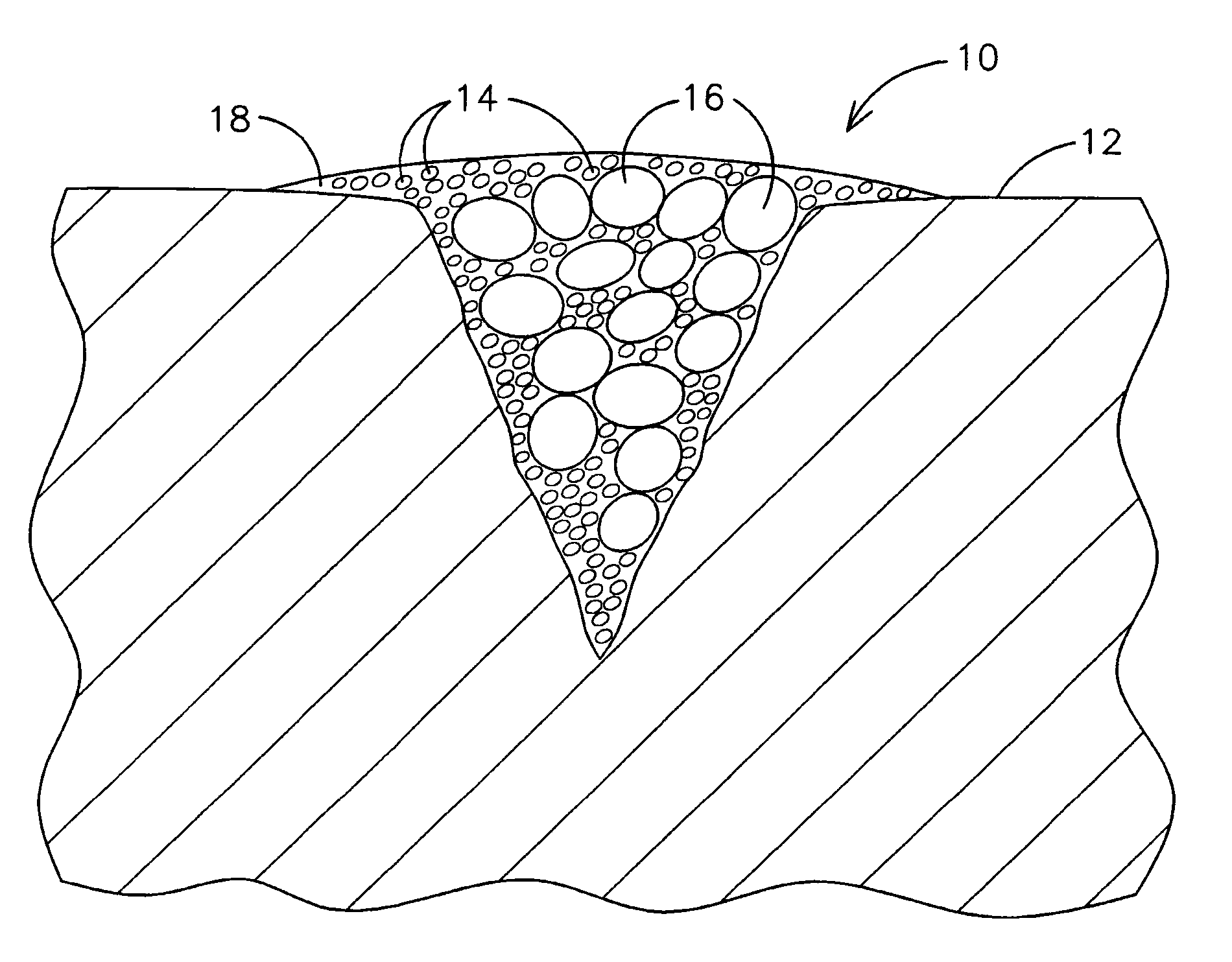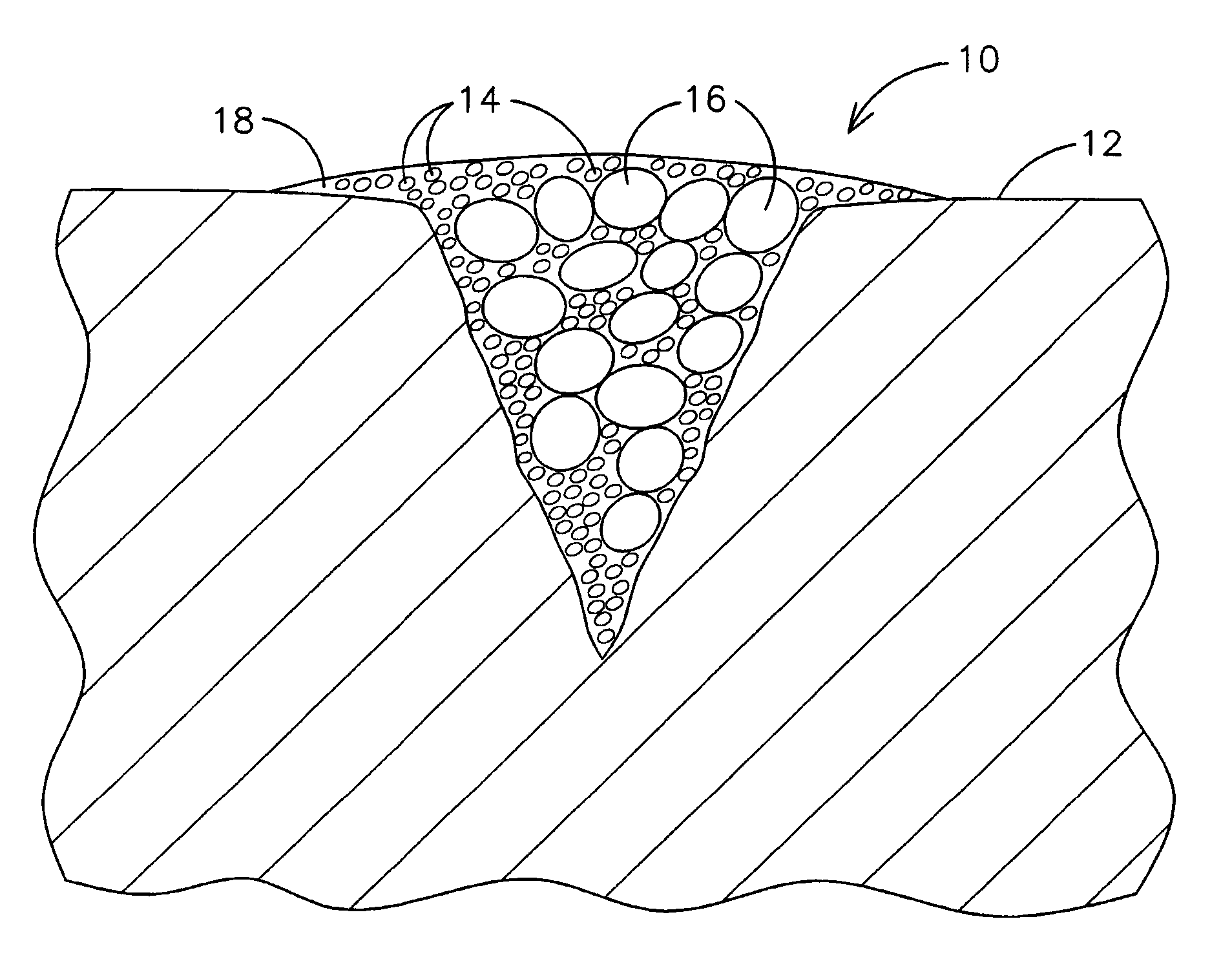High strength diffusion brazing utilizing nano-powders
a nano-powder and diffusion brazing technology, applied in the field of metalurgical field, can solve the problems of component damage, component damage, and various types of damage and deterioration of components, and achieve the effects of reducing the cost of components
- Summary
- Abstract
- Description
- Claims
- Application Information
AI Technical Summary
Problems solved by technology
Method used
Image
Examples
Embodiment Construction
[0008]The sole FIGURE illustrates an improved brazing material 10 filling a surface-opening crack in a superalloy component 12. The brazing material (mixture) 10 includes filler particles of a base alloy 14 such as a superalloy with a composition similar to that of the component 12, and optionally particles of a braze alloy (braze filler) 16, suspended in a carrier 18. The materials selected for the component 12, base alloy (superalloy filler) 14, braze alloy (braze filler) 16 and carrier 18 may have chemical compositions known in the art of brazing or other compositions particularly suited for a specific application. However, the size of the particles of base alloy 14 is less than the size of such particles used in prior art brazing materials. In particular, the size of particles of base alloy 14 are selected to be small enough so that the melting temperature of the base alloy particles 14 is significantly less than the melting temperature that the same material would exhibit in pa...
PUM
| Property | Measurement | Unit |
|---|---|---|
| size | aaaaa | aaaaa |
| size | aaaaa | aaaaa |
| size | aaaaa | aaaaa |
Abstract
Description
Claims
Application Information
 Login to View More
Login to View More - R&D
- Intellectual Property
- Life Sciences
- Materials
- Tech Scout
- Unparalleled Data Quality
- Higher Quality Content
- 60% Fewer Hallucinations
Browse by: Latest US Patents, China's latest patents, Technical Efficacy Thesaurus, Application Domain, Technology Topic, Popular Technical Reports.
© 2025 PatSnap. All rights reserved.Legal|Privacy policy|Modern Slavery Act Transparency Statement|Sitemap|About US| Contact US: help@patsnap.com


